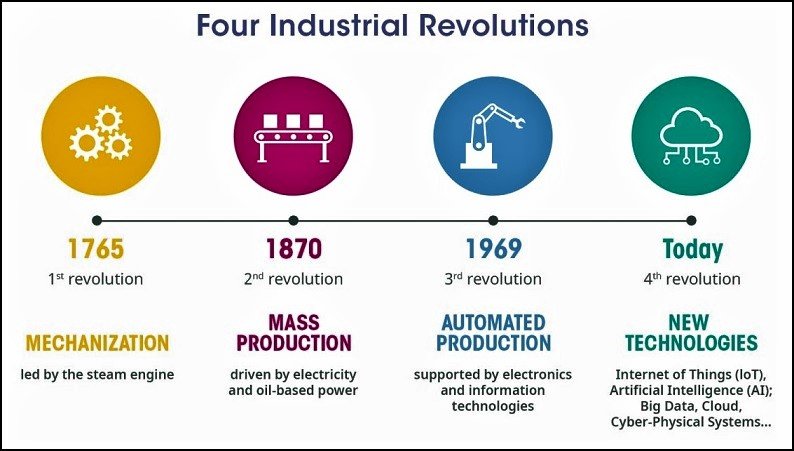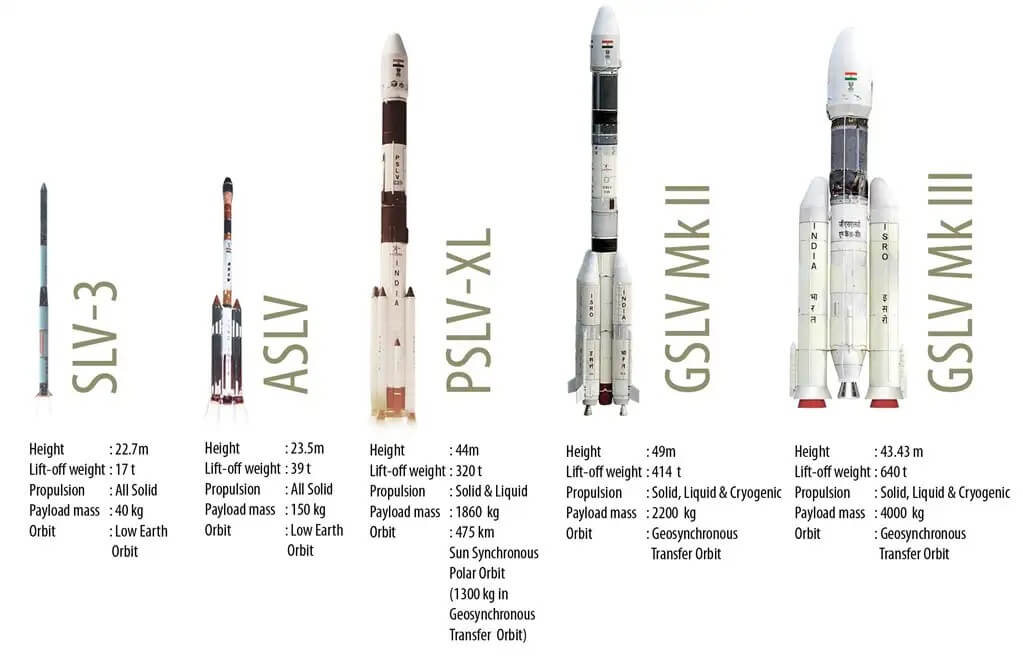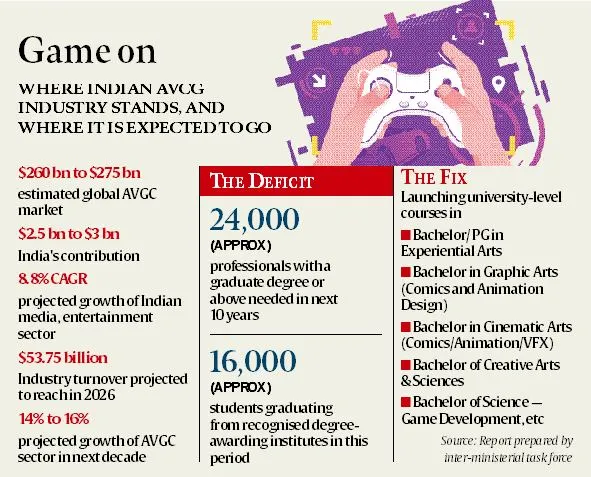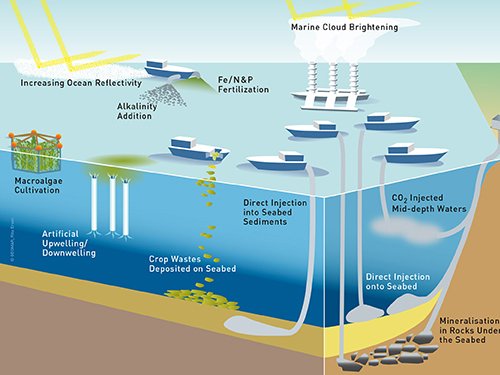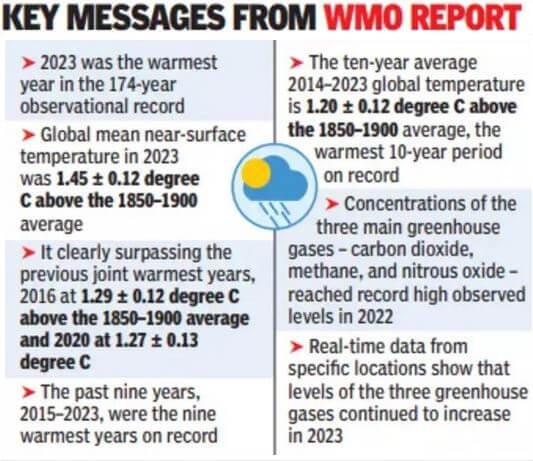
Deglobalisation of Food Inflation
Subscribers of "Current Affairs" course can Download Daily Current Affairs in PDF/DOC
Subscribe to Never Miss an Important Update! Assured Discounts on New Products!
Must Join PMF IAS Telegram Channel & PMF IAS History Telegram Channel
- Context (IE): Global food prices have crashed in the last year, but inflation remains elevated in India.
Food inflation in India
- Food Inflation is the measure of the price changes of food items in a consumer’s basket of goods and services, such as cereals, vegetables, fruits, dairy products, and meat.
- It is measured by Consumer Food Price Inflation (CFPI) in India, which is a subset of the broader Consumer Price Index.
Deglobalisation of Food Inflation
- It means that domestic inflation is not in trend with global inflation.
- India had a food price inflation index of 9.5% (December 2023), as opposed to minus 10.1% for the global FAO Food Price Index.
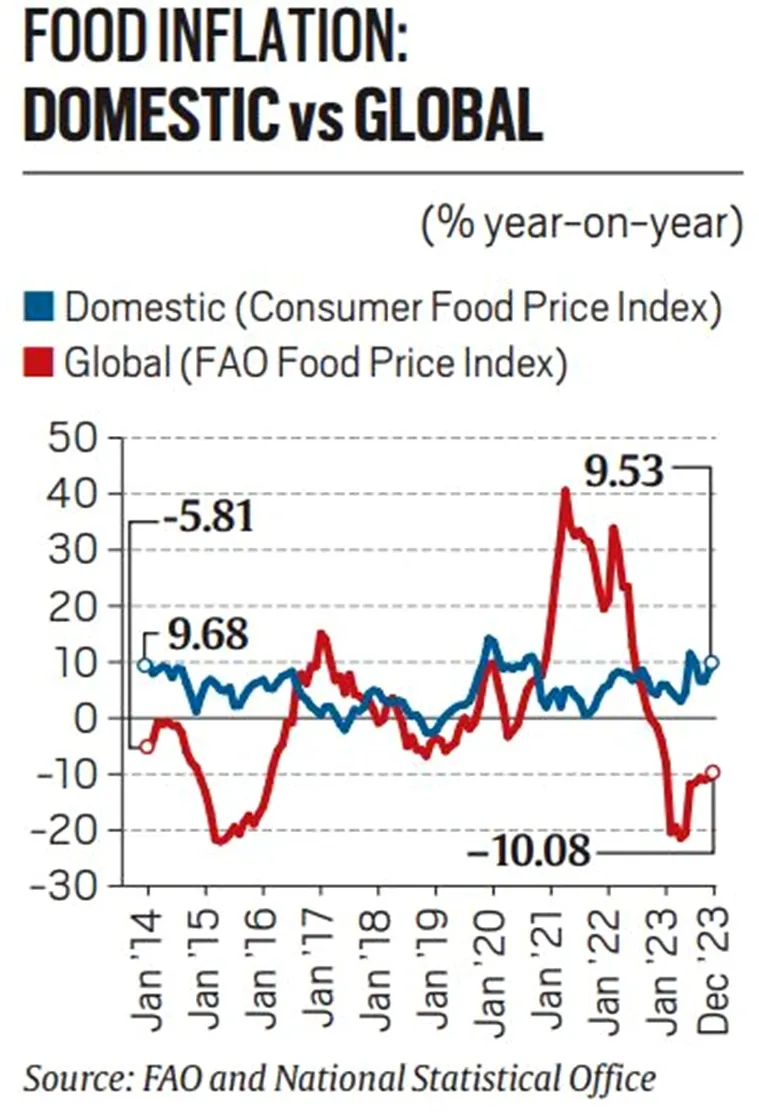
Global factors
- Slow transmission of Imports and exports led to inflation is observed.
- Global supply chain disruptions due to COVID-19, then the Russia-Ukraine conflict, resulted in import-led domestic retail inflation in edible oil and pulses.
- To counter imports of major pulses and crude edible oils at 0-5.5% duty till 2025 were allowed.
- Low global prices of Russian wheat and Indonesian crude palm oil trade off the threat of imported inflation.
- In other basket items, such as cereals, sugar, dairy, and poultry, to fruits and vegetables, India isn’t just self-sufficient but also an exporter.
- With the banned export of wheat, non-basmati white rice, sugar and onion, the potential for export-led inflation is effectively shut.
No impact of Red Sea attacks on food items
- Imports of arhar (pigeon pea) and urad (black gram) are mainly from Mozambique, Tanzania, Malawi and Myanmar and do not involve the Red Sea route.
- Masoor (red lentils) from Australia and Canada come through the North Pacific-Indian Ocean route.
- Marginally, the impact on Russian and European yellow/white peas can be there, but Canada is the biggest supplier for India.
- Edible oils are imported (from Indonesia, Malaysia), and Soybean (from Argentina and Brazil) through the South Atlantic and Indian Ocean, facing no impact of Red Sea attacks.
Domestic challenges
- Area sown under wheat has increased with conducive weather, indicating a bumper harvest.
- But sugar stocks in mills are at a six-year low, posing a challenge.
- Area sown under pulses has also decreased this year.





![PMF IAS Environment for UPSC 2022-23 [paperback] PMF IAS [Nov 30, 2021]…](https://pmfias.b-cdn.net/wp-content/uploads/2024/04/pmfiasenvironmentforupsc2022-23paperbackpmfiasnov302021.jpg)

